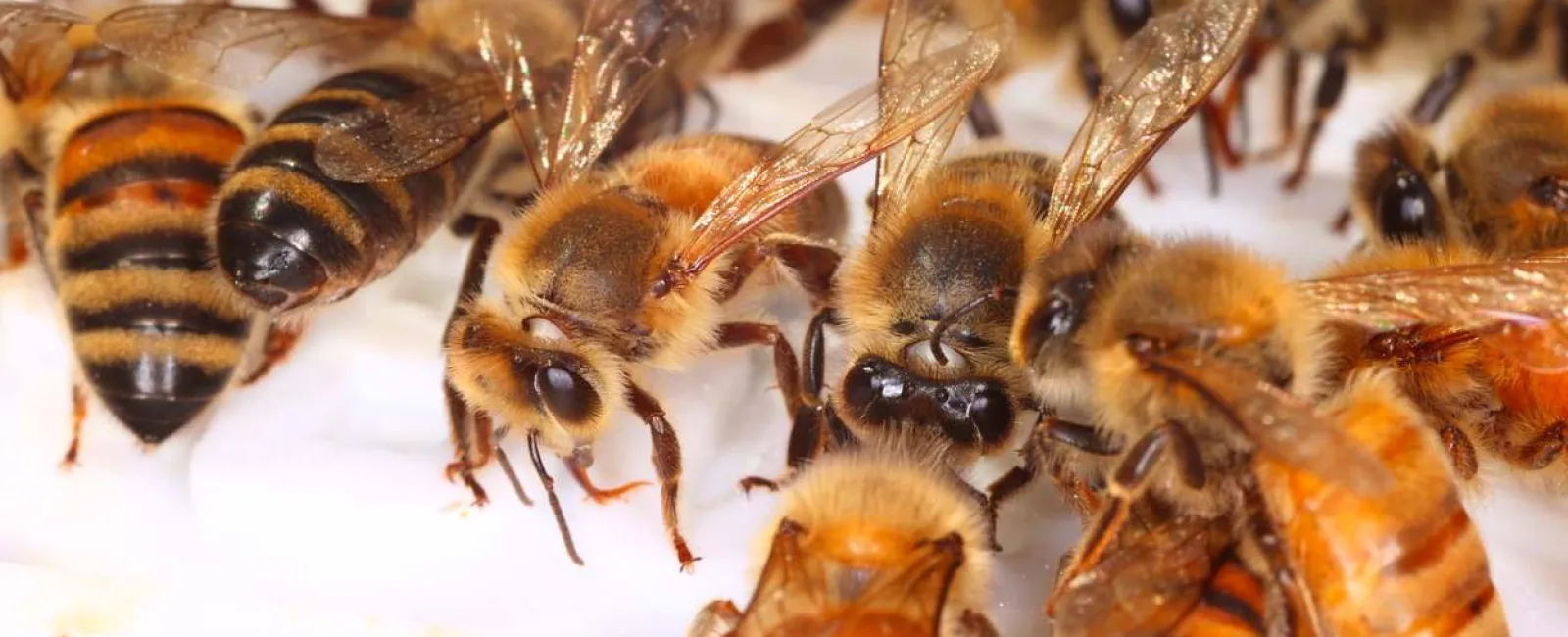When you see a yellow-and-black blur buzzing around your backyard barbecue, your first instinct might be to duck, swat, or sprint inside. But before you panic, it's worth asking: is it a wasp or a bee?
While both bees and wasps are important insects, their behaviors, biology, and impact on your home (and your peace of mind) are very different. Knowing the key differences between these stingers can help you protect pollinators, prevent infestations, and decide when it's time to call in the Pest Nerds at Greenix for pest control.
Wasps vs Bees: The Big Buzz
Here's the quick breakdown:
Bees (like honey bees and bumble bees) are fuzzy, branched-hair pollen collectors. They're the important pollinators that help your garden and local ecosystem thrive. They typically feed on nectar and produce food like honey or bee bread for their colonies.
Wasps (like paper wasps, yellow jackets, and mud daubers) tend to be sleek, shiny, and built more for hunting. Adult wasps don't actually eat solid food. Instead, they sip nectar and fruit juices, while wasp larvae feed on insects that adults capture and bring back.
Both bees and wasps can sting, but wasps tend to be more aggressive and can sting multiple times, unlike most bees, which die after stinging.
Meet the Bees
Honey Bees (Apis mellifera)
The most famous of all bees, honey bees are social insects that live in large honey bee colonies inside hives, hollow logs, or even loose tree bark. Inside, thousands of worker bees, male bees (drones), and female bees (queens) keep the hive thriving. Honey bees are busy collecting pollen, turning nectar into honey, and ensuring the new colony survives.
Bumble Bees (Genus Bombus)
Bumble bee colonies are smaller than honey bee colonies, but these big, fuzzy pollinators are just as important. They're often found around flowering trees, tree branches, and hollow tree cavities. Unlike honey bees, most bumble bee colonies die in the fall. Only the fertilized queens survive the winter to start a new colony in spring.
Solitary Bees
Not all bees are social. Solitary species like carpenter bees tunnel into wood, while other solitary bees choose nest sites in soil, stems, or cracks in horizontal surfaces. Even though they don't form large colonies, they're still important pollinators.
Meet the Wasps
Social Wasps
Species like paper wasps, yellow jackets (Genus Vespula), and the European hornet are the classic culprits when it comes to backyard stings. These social species build nests in tree branches, under eaves, or even on your picnic table. A single queen will lay eggs in spring, and by summer, you may have an entire nest full of workers defending their territory.
Solitary Wasps
Unlike social wasps, solitary wasps like mud daubers don't form colonies. Instead, each female builds her own nest, often on a horizontal surface or tucked into crevices, where she'll deposit a single egg along with paralyzed other insects for her larvae to feed on.
Adult Wasps vs Wasp Larvae
Here's a fun fact: adult wasps feed on nectar and sugary foods (that's why they love your soda can at the picnic), while wasp larvae are carnivores. Adults bring them a buffet of caterpillars, flies, and other prey.
Wasp Nests: Why Fall Is Prime Time for Removal
By late fall, most wasps in a colony have died off, leaving only the fertilized queens tucked away in bark, soil, or hollow tree cavities, waiting to start new colonies in spring. That makes autumn one of the safest and most effective times for wasp nest removal—you're not battling an active swarm, but you're still preventing a new generation from moving in.
At Greenix, we know that tackling wasp nests (whether from social wasps like yellow jackets or invasive species like European hornets) can be risky. Their stings can cause swelling, pain, and in some cases, anaphylactic shock. Don't risk it. Our trained techs handle the nest so you can reclaim your yard without fear.
Why Identification Matters
Confusing bees and wasps can lead to mistakes:
Spraying honey bees means harming a native species that helps with pollination.
Ignoring a wasp nest could lead to painful stings for the whole family.
Treating other bees like pests could worsen habitat loss for pollinators. For guidance on safe beehive removal, refer to expert resources.
With many species of bees and wasps in the eastern United States alone, proper identification is key to safe and sustainable pest management.
Say Goodbye to Stingers with Greenix
Whether it's a bumble bee colony in your shed, carpenter bees boring into your deck, or a paper wasp nest above your doorframe, the Pest Nerds at Greenix know how to handle it. We protect pollinators while removing pests that pose risks to your home, your family, and your backyard barbecues.
When in doubt about wasps and bees, let us be your friendly neighborhood bug brainiacs. We'll identify, treat, and help you prevent future infestations so you can enjoy your yard sting-free.

